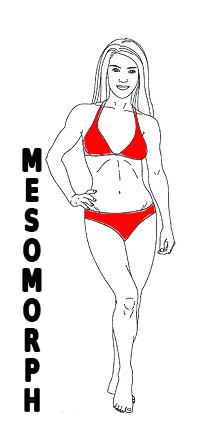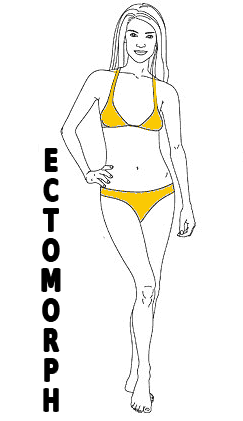1. Eat healthy carbs at the right time of the day!
Eat whole, natural, healthy carbs each day between the hours of 10am-2pm, when your body’s metabolism is at its highest peak. Avoid carbs after that time. This will align better with your conservative, and naturally slow metabolism.
Remember, carbs are fuel for your brain and body. But, they are also energy rich foods. You simply do not need them later in your day.
2. Eat small portions of healthy fats at each meal:
Fats do provide more calories per gram than protein and carbs. For instance, fats give you 9 calories per gram, carbs and proteins only 4 calories per gram. However, dietary fats are absorbed in your body at a much slower rate than the other two macronutrients, and this allows your slow and steady metabolism to use these valuable slow release macronutrients as valuable energy throughout your day. And as an extra bonus, they make you feel full longer and ultimately, more satisfied!
Use the Healthy Carb, Protein and Fat Chart to guide you.
3. Eat protein in all your meals:
Healthy, natural sources of lean protein should be included in each of your meals.
Proteins, like fats, will help you feel fuller by slowing digestion. And of course, its primary and key role is in maintaining and building new cells and lean tissue (muscle), which will also boost your metabolism!
Further, proteins require more energy to metabolise than both carbs and fats. This is due to their high thermic effect on your body –The thermic effect of food is a measure of how much energy our bodies use to digest, absorb and metabolise the nutrients.– The thermic effect of fats, for instance, is around 2-3%; carbs around 6-8%; and proteins at a whooping 25-30%! This is a good reason to include both flesh and plant proteins in each of your daily meals!
Use the Healthy Carb, Protein and Fat Chart to guide you.
4. Drinking water:
Water and lots of it, is critically important to fat loss— your body simply cannot metabolise stored fat efficiently without ample water each day. A decrease in water intake will cause fat deposits to increase in our bodies, whereas an increase in water intake can actually reduce fat deposits.
The average person should drink about 6-8-ounce glasses of water every day (64 ounces, two quarts or 2 liters). The more overweight you are, the more physically active or the hotter the climate you live in—the more water you need to drink daily.
Here is a formula to guide you:
Divide your body weight in half. That figure, changed to fluid ounces, represents the most water you should drink in a day. But aim for a glass or two less: If you weigh 140 pounds (64 kg), aim at drinking around 64 ounces—no more than 70 ounces (2 liters). If you are a 200-pound person, aim for 85 to 90 ounces (2.5 liters)—at most 100 ounces (3 liters).
5. Ample sleep each night and less stress!
Lack of sleep and incessant stress keeps your “refueling appetite” on, inducing stress eating and weight gain.
So ensure you practice the 7 stress-reducing strategies in your free 4 Myths of Fat Loss book.
Make this a priority today. Your body simply cannot stay balanced without ample sleep and less toxic stress.
The Mesomorph
Breakfast:
Drink 8-10 oz (236-300 ml) glass of room temperature water as you awake.
Eat Transitional Scrambled Eggs with 1 full egg and 2 egg whites; 1 tsp freshly grated parmesan cheese; pinch of salt and pepper (optional); 1 thin slice of broiled or roasted turkey or broiled turkey bacon; 1/2 cup fresh, seasonal fruit, such as fresh berries, cantaloupe and apple.
Lunch:
Drink 8-10 oz (236-300 ml) glass of water 10-15 minutes prior to eating.
Eat 1 1/2 cups Green Lentil and Vegetable Soup with a slice of toasted sprouted whole grain bread drizzled with olive oil. Serve with a small side salad,
or choose
An Open-Faced Turkey Breast Sandwich with 1 slice toasted wholegrain or gluten free bread; 2 oz (56g) broiled and sliced turkey breast; 1/4 sliced or mashed avocado; 3-4 slices of tomato; ample lettuce; 1-2 Tbsp grated carrot.
Afternoon Snack:
Drink 8-10 oz (236-300 ml) glass of water 10-15 minutes prior to eating.
Eat 1/2 cup fresh or frozen organic berries with 1/4 cup nonfat, unsweetened Greek yogurt and a handful of raw or baked almonds,
or choose
A frozen fruit smoothie with 1/3-1/2 cup of frozen blueberries and raspberries, 1/2 banana; 2/3 cup unsweetened apple juice and a handful of raw or baked nuts, like almonds, walnuts, cashews.
Dinner:
Drink 8-10 oz (236-300 ml) glass of water 10-15 minutes prior to eating.
Eat Transitional Fish and Chips: 4 oz (113 g) seared or broiled white, fleshy fish, such as halibut, sole, cod or snapper (skinless) served with 2 Tbsp of a yogurt tartar sauce; one medium potato, sliced into potato fingers (fries), drizzled with no more than 2 tsp olive oil and baked in the oven until golden brown and crisp. Serve with 1 1/2 cups of a green salad with tomatoes, bell peppers, carrots, cucumber, 1/4 avocado; 1 Tbsp of one of the MVB-Health’s healthy salad dressings. (See my blog on Healthy, Low Calorie Salad Dressings at www.MVB-Health.com)
Dessert: for the “Sweet Tooth” (Strictly optional)
1/4-1/3 cup (size of 2 golf balls) nonfat plain frozen yogurt with 4-5 organic sliced strawberries.
Time management “rollover” techniques for the next day:
1. Set aside enough salad (without dressing) for your lunch the next day.
2. Make at least double the tartar sauce to freeze for another meal.
Important daily fat loss advice for the Mesomorph:
You can eat larger portions and more carbohydrates than your fellow endomorph without putting on weight. You tend to thrive on a balanced diet with a macronutrient split of 40% healthy, unprocessed carbohydrates, 30% lean proteins, and 30% healthy fats.
Generally speaking, you do not have to watch portion sizes in your twenties and early thirties (if you remain active). However, in your late thirties and early forties, you must also align your eating habits with your changing metabolism and hormonal changes, and focus on a healthy diet with moderate portions using the Healthy Carb, Protein and Fats chart provided here:
Use the Healthy Carb, Protein and Fat Chart to guide you.
The Endomorph
(Also applicable to the Mesomorph over 40)
Breakfast:
Drink a glass of room temperature or warm water with a splash of lemon juice.
Eat 2/3 cup Bircher muesli with 1/2-2/3 cup g/f oats mixed together with 1/3 cup unsweetened nonfat Greek yogurt; 1/2 a grated apple or pear (with its skin); 1 teaspoon grated coconut; 4-5 raw almonds; pinch cinnamon; 1 Tbsp ground flaxseed meal; 1 Tbsp honey (optional); 1/4 cup of berries (strawberries, blueberries or raspberries).
or
Eat a Veggie and Salmon Scramble with 1 full egg, 2 egg whites; 1/4 cup sautéed spinach; 5-6 cherry tomatoes.
Optional: Serve with 1 slice of whole-wheat, sprouted toast.
Lunch:
Drink 8-10 oz (236-300 ml) glass of water 10-15 minutes prior to eating.
Eat a Nicoise Salad, portions the size of a bread and butter plate = 2-3 leaves of shredded romaine lettuce; 1 hard boiled egg, sliced; 6-8 steamed green string beans; 3 oz (84g) canned tuna (in no oils) or 3 oz sliced, fresh broiled tuna; 1 medium tomato, sliced; 1 small boiled potato, sliced. Drizzle 1 Tbsp olive oil and 1 Tbsp olive oil and balsamic vinegar over this salad.
Afternoon Snack:
Drink 8-10 oz (236-300 ml) glass of water 10-15 minutes prior to eating.
Eat a few slices of raw carrots, red peppers and cucumber with 2-3 Tbsp hummus or guacamole dip.
Dinner:
Drink 8-10 oz (236-300 ml) glass of water 10-15 minutes prior to eating.
Eat 1- 1 1/2 cups Thai Shrimp (or skinless chicken breast) and Veggie Stir Fry, prepared with 1/2 cup cooked shrimp (or 3 oz/85 gram piece of chicken); 1 1/2 cups vegetables (bell peppers, asparagus, green beans, bean shoots, and broccoli) sautéed in 1-2 tsp sesame oil; 1-2 cloves of crushed garlic; 1 inch (2.5 cm) finely grated fresh ginger; 2-3 tablespoons low sodium soy sauce. Serve with 1/3 cup cooked quinoa.
Time management “rollover” techniques for the next day:
Set aside a serving of Thai Shrimp and Veggie Stir Fry with veggies for a meal the next day, such as a quick and easy lunch. Healthy “left overs” should play an important role in your daily diet, as it is not realistic in today’s 24/7 technologically driven world to always make a meal each day from scratch.
The Ectomorph
Breakfast:
Drink a standard 8-10 oz (236-300 ml) glass of room temperature water as you awake.
Eat 1 cup of a wholegrain cereal high in fiber (at least 3-4g), low in sugars (less than 5-6 g) or a gluten free cereal low in sugar. Serve with 1/2-2/3 cup 1% or nonfat milk or unsweetened non-dairy milk (coconut, almond, rice or soymilk). Add 1/4-1/3 cup fresh blueberries or sliced peaches; 1 Tbsp flaxseed meal; 1 tsp raw wheat germ (if not gluten intolerant).
If you are accustomed to sweet breakfast cereals with a sugar content over 6-7 grams, begin to transition slowly over the next few weeks, gradually adding less of the sugary cereal and more of a “healthy” wholegrain cereal low in sugars.
Morning Snack:
Drink 8-10 oz (236-300 ml) glass of water.
Eat 1 turkey rollup made with 1 thin slice of organic, baked turkey wrapped around either a couple of slices of bell peppers, green beans or broiled asparagus.
Lunch:
Drink 8-10 oz (236-300 ml) glass of water 10-15 minutes prior to eating.
Eat a Turkey Sandwich = 2 pieces of toasted 100% sprouted wholegrain or gluten free bread with 3-4 slices tomatoes; 1 Tbsp mashed avocado; touch of mustard; 2 thin slices baked turkey breast; handful lettuce. Serve with 1/2 cup of fresh fruit.
Afternoon Snack:
Drink 8-10 oz (236-300 ml) glass of water 10-15 minutes prior to eating.
Eat 2 Tbsp canned salmon or tuna (without the skin or oils) served with 2-3 small baked wholegrain or gluten free rice crackers.
Dinner:
Drink 8-10 oz (236-300 ml) glass of water 10-15 minutes prior to eating.
Eat a Transitional Spaghetti Bolognese the size of a deck of cards, substituting red meat for ground chicken or turkey meat, adding finely chopped onion, bell peppers and a fresh Marinara sauce. Serve with 1 Tbsp freshly grated Parmesan cheese and a green salad with 1 Tbsp olive oil and balsamic vinegar.
Dessert: (Optional)
1/3-1/2 cup of Greek Yogurt with 1/3 cup fresh fruit.
Time management “rollover” techniques for the next day:
1. Set aside enough salad (without dressing) for your lunch the next day.
2. Make at least double the turkey bolognese sauce to freeze for another meal.
3. Ensure you also set aside a single serving of spaghetti turkey bolognese for lunch (optional). Left over food is a valuable time saver.
Here are the critical things you can do today to stay healthy and happy:
Eat the correct balance of each macronutrient for your body type.
As you are naturally lean and lanky, you can generally eat large amounts of food without gaining an ounce/kg!
Your body type, with its fast metabolism, thrives on carbohydrates. It is your main source of fuel, due to your high tolerance for this energy rich nutrient.
As such, you should eat high quality, natural carb foods throughout the day, dividing each macronutrient as follows: 55% complex carbohydrate, 25% lean protein, and 20% healthy fat.
A final message to the Ectomorph:
Health, longevity, and peak performance are your goals, not weight loss.
Wishing you much happiness and health,
![]()
If you need more support to get the healthy and lean body you dream of, check out the link below so I can inspire and guide you towards long-term health and fat loss:
>> See the MVB-Health’s programs to guide and support you all the way! way
Weight loss, lose weight, diets, fat loss, nutrition, exercise, health, skinny body, lose cellulite, health, lose cellulite, tone up, get fit, motivation tips, weight loss tips, exercise programs, mindset, hypnotherapy, positive affirmations, positive thinking, burn fat, metabolism, body types, boost metabolism, menopause, ageing, midlife weight gain, after 40 fat, after 50 weight gain


